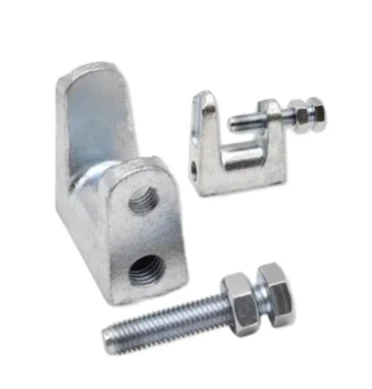dec . 07, 2024 14:19 Back to list
types of metal clamps
Types of Metal Clamps A Comprehensive Guide
Metal clamps are essential tools in various industries and applications, providing secure connections and stability for different components. Whether you’re in construction, woodworking, plumbing, or automotive fields, understanding the various types of metal clamps can significantly enhance your operational efficiency. This article explores the most common types of metal clamps, their features, and their uses.
1. C-Clamps
C-clamps, named for their characteristic 'C' shape, are among the most popular types of clamps used in workshops. They are perfect for holding workpieces together in carpentry or metalworking. C-clamps consist of a fixed arm and a movable arm, which is tightened using a screw mechanism. This design allows for a strong grip, making them ideal for tasks that require precision and durability. C-clamps come in various sizes, making them versatile for different applications.
2. Pipe Clamps
Pipe clamps are specifically designed for securing pipes or tubing. They usually have a fused body with one or two clamping screws that tighten around the pipe. These clamps are commonly used in plumbing and HVAC systems to hold pipes in place and prevent leaks. Pipe clamps can be adjustable or fixed, depending on the requirements of the specific installation.
3. Hose Clamps
Hose clamps are used to secure hoses over fittings and are particularly crucial in automotive and plumbing applications. They come in various designs, including worm gear, spring-loaded, and V-band clamps. Worm gear clamps feature a metal band that wraps around the hose and is tightened using a screw mechanism, ensuring a tight fit. Spring-loaded clamps, on the other hand, automatically adjust to accommodate changes in the hose diameter due to pressure or temperature variations, providing an effective seal.
4
. T-Bolts and T-Slot Clampstypes of metal clamps

T-bolts and T-slot clamps are widely used in machinery and manufacturing. The T-bolt fits into a T-slot on the equipment, allowing for easy assembly and adjustment. This type of clamp is often found in setups where rapid reconfiguration is essential, such as in jigs and fixtures. T-slot clamps provide a reliable way to secure components without permanent fastening, allowing for greater flexibility in design and assembly.
5. Corner Clamps
Corner clamps are specifically designed for right-angle joints. They are commonly used in furniture-making and framing due to their unique design that maintains a steady angle while allowing for easy access to tighten screws or adhesive. The clamp grips pieces at a precise 90-degree angle, making it invaluable for ensuring accuracy in construction projects.
6. Toggle Clamps
Toggle clamps are designed for quick clamping and release, making them invaluable in assembly lines and woodworking. They use a toggle mechanism, which allows for strong clamping pressure without much force. Toggle clamps come in various styles, including vertical and horizontal designs, to suit different needs and workspace configurations.
7. Spring Clamps
Spring clamps are lightweight and easy to use, featuring a spring-loaded mechanism that allows for quick and secure gripping. They are perfect for light-duty applications, like holding fabric while sewing or securing lightweight materials during assembly processes. Their ease of use and portability make them popular in both professional and home settings.
Conclusion
Understanding the various types of metal clamps and their applications is crucial for anyone involved in construction, manufacturing, or DIY projects. Each type of clamp serves a specific purpose, providing unique features that enhance the reliability and efficiency of your work. Whether you’re looking for something robust like C-clamps or something more specialized like corner clamps, selecting the right type of clamp will ensure your projects are completed smoothly and securely. Investing in high-quality clamps can significantly improve your workflow, leading to better and more efficient results in your endeavors.


